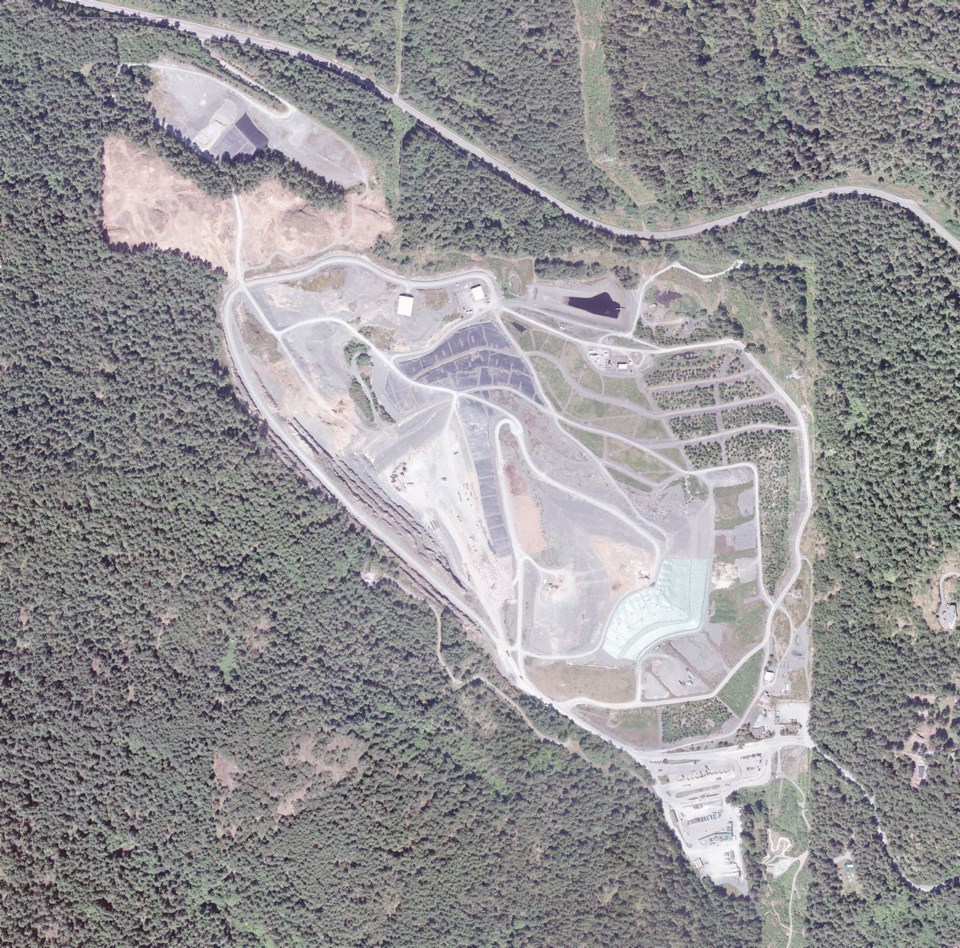A group of Willis Point residents who oppose plans to spread sewage biosolids at the Hartland Landfill is raising new concerns about whether the granular pellets could transmit COVID-19.
But B.C.’s Environment Ministry says there’s “no risk” of that happening and that the biosolids will be treated to the highest provincial standards for pathogens.
“Experience and research indicates that viruses and micro-organisms coming into contact with chemicals and heat are destroyed in the wastewater treatment and subsequent drying process,” the ministry said in a statement.
“Further, any land-applied biosolids would be exposed to natural ultraviolet radiation. COVID-19 has been shown to ‘die’ very quickly due to dehydration and ultraviolet exposure.”
Area residents and members of the Mt. Work Coalition, however, remain unconvinced. They say information about COVID-19 and how it spreads seems to be changing constantly, and they want the province to put the biosolids plan on hold until there’s clear proof that it’s safe.
“We would like to see that suspended permanently, but at the very least until such time as a proper scientific study is done to assure us that there’s no risk from any COVID contamination,” said Hugh Stephens, a Willis Point resident and member of the coalition.
Stephens wrote to Premier John Horgan about the group’s concerns last month and received a response from Environment Minister George Heyman that highlighted the similarity between the novel coronavirus and the virus that causes Severe Acute Respiratory Syndrome, or SARS.
“The fate of SARS in sewage and biosolids was studied after the outbreak in 2003,” the minister said in his June 5 letter. “These viruses are not likely to survive the sewage treatment process or the biosolids anaerobic digestion and drying process.
“Based on this information and in consideration of occasional and limited land application of biosolids at a secured landfill, the risk to the public is extremely low.”
By Wednesday, however, the ministry had removed any doubt from its assessment, telling the Times Colonist in a statement that “biosolids pose no risk of COVID-19 transmission.”
Asked how the ministry’s position had moved from “extremely low risk” to “no risk” in less than two weeks, the ministry provided a more detailed explanation and pointed to research published last month by the non-profit Water Environment Federation in the United States that concluded “despite shedding of the virus RNA in feces, there is no evidence supporting the transmission of COVID-19 virus through the wastewater system including biosolids.”
But Nikki Macdonald, who chairs the Mt. Work Coalition, said the ministry’s shifting statements only add to residents’ concerns.
“My observation is that the difference in the statements suggests that they have not sound evidence upon which they are making their judgments,” she said.
“I don’t think we know enough about the COVID-19 virus to be able to make such a definitive statement of no risk.”
Even before the pandemic, Macdonald and other area residents were opposed to the spreading of biosolids at Hartland for fear that airborne contaminants could pollute the countryside.
“We believe that biosolids should not be spread at Hartland because of the risk to the surrounding ecosystem including farms, businesses, homes, schools and users of the park,” Macdonald said.
The Capital Regional District banned land application of biosolids in 2011 over similar concerns that it would contaminate farmland and food production with chemicals, heavy metals and pharmaceuticals.
But in February, the CRD board reversed course and agreed to partially lift the ban to allow about 70 truckloads a year to be spread over active and inactive areas of the Hartland Landfill beginning next year.
The district was under pressure at the time to figure out what to do with 7,000 tonnes of dried biosolids that will be generated annually by the region’s new sewage-treatment system.
Most of that granular material will be shipped to the Lower Mainland for use as fuel in cement kilns. But the district needed to find a use for material that will be produced during the four to six weeks each year when the kilns shut down.
Initially, the plan was to simply dump that material in the landfill, but Heyman ordered the district to find a beneficial use for it.
District staff recommended easing the ban and using biosolids to fertilize trees on closed portions of the landfill or spreading it on active areas to reduce greenhouse gas emissions.
Heyman’s ministry is still reviewing that plan, but stressed that the use of biosolids is strictly controlled to protect human health and the environment.
“There are strict limits for pathogens and contaminants and biosolids are treated and stabilized to reduce odours and harmful substances, including pathogens,” the ministry said in a statement.
It added that biosolids will be treated and dried to a Class A standard at a new CRD facility that is expected to exceed the pathogen treatment requirements of B.C.’s Organic Matter Recycling Regulation.
“Our ministry continues to review scientific knowledge and testing procedures, as well as evolving best practices and uses of biosolids, to ensure that all environmental factors are addressed in the best and most useful manner possible,” the statement said.



